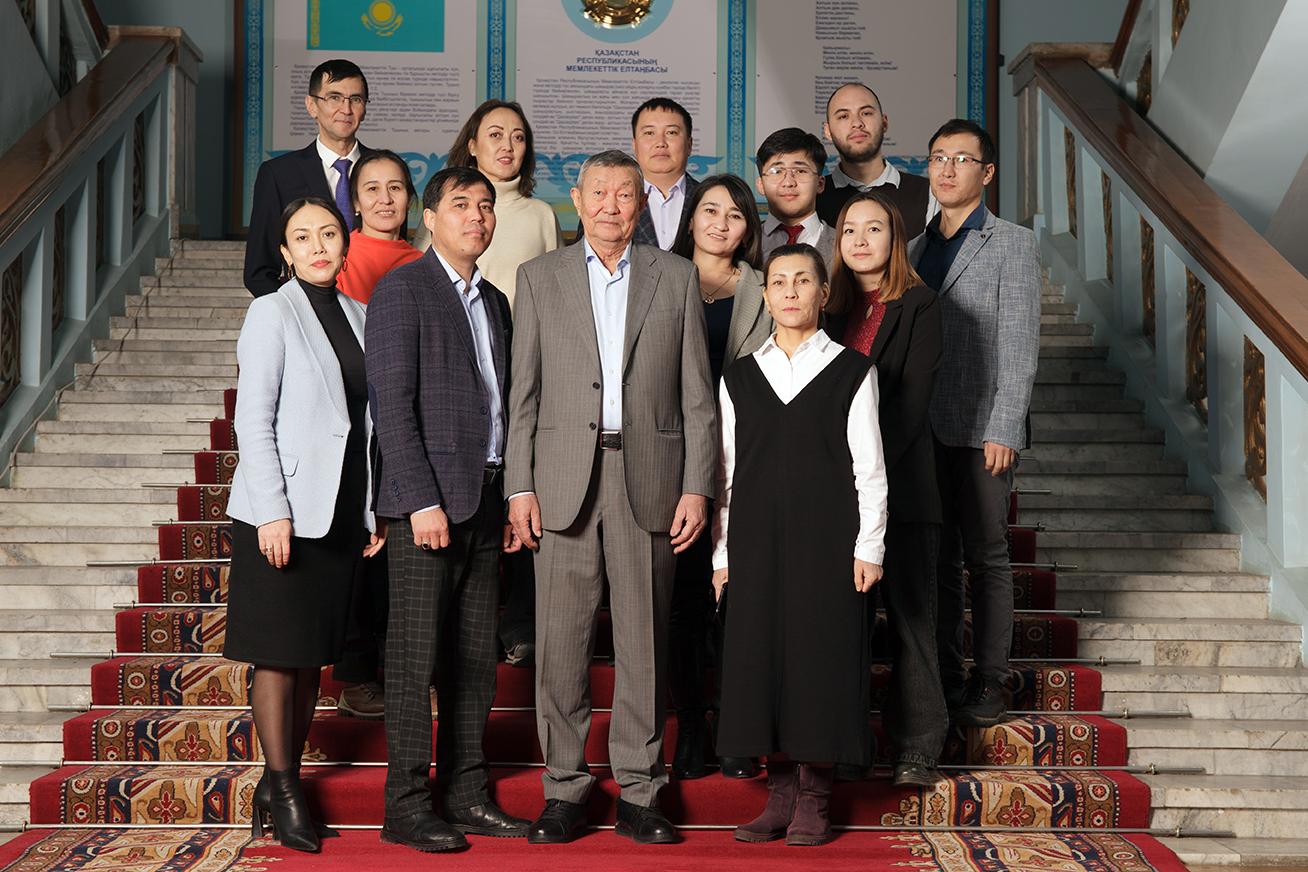Department of Archaeology of the Early Iron Age
24 May 2022
The Department of Archaeology of the early Iron Age as an independent division was created by the decision of the Academic Council of the Institute dated December 23, 2021 (Protocol No. 9), and started its work in 2022. Prior to that, the department employees were part of the group for the study of monuments of the early Iron Age and ancient art as part of the "Department of Archaeology of the Stone and Paleometal Epoch". The department originates from the "Department of Primitive Archaeology", created in 1989 by the decision of the Academic Council of the Institute of History, Archaeology and Ethnography named after Ch. Valikhanov of the Academy of Sciences of the Kazakh SSR, which was headed by Candidate of Historical Sciences Z. Samashev.
On April 8, 1996, due to the liquidation of the Academy of Sciences of the Republic of Kazakhstan and the subsequent re-organization of the structural divisions of the Margulan Institute of Archaeology (Order No. 7), the following departments were abolished: 1. "Primitive archaeology"; 2. "Medieval archaeology"; 3. "Laboratory of Archaeological Technologies". On April 17, 1996, the established "Department of Archaeology of the Early Iron Age" was reorganized into the "Research Group of Monuments of Early Nomads" under the leadership of Doctor of Historical Sciences K. Akishev. In 1998, it was renamed the "Ancient Nomads Research Group". By the decision of the Academic Council of the Institute of Archaeology named after A.Kh. Margulan in 2002, the "Department of Primitive Archaeology" was created from various research groups, which was headed by Candidate of Historical Sciences Zh. Kurmankulov. In 2009, the Department was headed by the Candidate of Historical Sciences A. Beisenov, in 2017 - Candidate of Historical Sciences G. Jumabekova, since 2020 - Candidate of Historical Sciences Zh. Utubaev.
The early Iron Age is the most important historical period that accounts for the formation of cultures of the Scythian-Saka type, the final formation of the nomadic form of cattle breeding takes place, the organization of early state formations that determined the vector of development of steppe and agricultural societies of Kazakhstan and adjacent territories. During this period, iron metallurgy appeared and became widespread.
The allocation of an independent "Department of Archaeology of the early Iron Age" in the structure of the Margulan Institute of Archaeology is aimed at activating research of this period in the archaeology of Kazakhstan, which will advance to solving existing scientific problems in this area.
Department Staff:
1. Utyubaev Zhanbolat - department head
2. Aitkali Azat
3. Akkalieva Aibobek
4. Akhiarov Islam
5. Bazarbaeva Galiya
6. Ganieva Aynagul
7. Dzhumabekova Gulnara Sayinovna
8. Zhambulatov Kayrat
9. Kasenova Asemgul
10. Kurmankulov Zholdasbek
11. Ongar Akan
12. Suindikova Makpal
13. Turmakhan Nurdaulet
14. Chotbaev Aidos
15. Yarygin Sergey

The tasks of the Department are:
- development and implementation of research plans in the field of the early Iron Age of Kazakhstan;
- fundamental and applied research within the framework of the implementation of program-targeted, grant and other (international, regional) projects;
- systematization and generalization of materials on the archaeology of the early Iron Age (archival, museum and published sources), development of chronology and periodization issues, determination of cultural ties with the population of neighboring regions using natural science methods of individual regions;
- reconstruction of paleoeconomics and the life support system of the population of the early Iron Age based on the study of materials of settlements, necropolises, sanctuaries, taking into account topography and geomorphology;
- reconstruction of the religious and mythological picture of the world of the population of the early Iron Age;
- study of cultural and political ties of nomadic tribes and early state formations of Europe and Asia based on the analysis and comparison of written sources and archaeological materials;
- study of the architecture of urban and rural settlements of the settled agricultural population of the lower reaches of the Syrdarya;
- publication of scientific, popular scientific publications on the problems of the early Iron Age, containing the results of the scientific activities of the Institute;
- organization and holding of scientific conferences, seminars;
- identification of ethnographic differences and features of archaeological cultures of the early Iron Age on the territory of Kazakhstan.
Projects within the framework of program-targeted financing, in which the department employees have participated over the past 3 years:
PTF 2023-2024 "Northern Kazakhstan in the context of cultural and historical processes: from the Stone Age to ethnographic modernity", headed by Z. Samashev;
PTF 2022-2023 "Cultural genesis in the Kazakh steppes: new paradigms of the problems of studying the continuity of material and spiritual heritage according to archaeological sources", headed by A. Onggar;
PTF 2021-2022 "The Great Steppe in the context of ethnocultural research", headed by B. Baitanayev;
GF 2022-2024 "Sarmatians of Zhaiyk: archaeology, restoration, reconstruction (based on the materials of the Urysai-2 complex", headed by G. Bazarbayeva;
GF 2022-2024 "Cultural and landscape space of the southern part of the Kazakh Tobol region: stages of steppe civilization" headed by G. Jumabekova;
GF 2022-2024 "Study of the archaeological complex of the Hun-Sarmatian era of Tausamaly in Eastern Jetysu", headed by S. Yarygin;
GF 2021-2023 "Rural settlements of the early Iron Age in the lower reaches of the Syrdarya: household and life", headed by Zh. Utubaev.
